Warm Roof Systems for Superior Insulation and Building Performance
Maximise energy efficiency and long-term performance with warm roof systems that excel in New Zealand’s demanding climate.
1
Energy Savings – Lower power bills with continuous high-performance insulation.
2
Tapered Boards – Save time and money by creating the fall within the insulation.
3
Moisture Control – Avoid condensation by keeping the roof structure warm and dry.


What Is a Warm Roof - And Why It's Ideal for NZ Conditions
A warm roof is a flat roof system where insulation is installed above the structural deck, rather than below it. This keeps the entire roof structure on the warm side of the thermal envelope, improving thermal stability and eliminating the risk of condensation within the roof cavity.
In contrast to traditional cold roofs, which require ventilation and can result in internal moisture, warm roofs deliver both durability and energy performance in a single, compact system.
Warm roof systems are now widely recognised in New Zealand as the most reliable flat roof solution, particularly as the climate becomes more extreme and building performance expectations become more demanding.
Thermal Efficiency, Airtightness and H1 Compliance Made Simple
Warm roofs support continuous insulation, meaning fewer thermal bridges and a more stable interior environment. This makes it easier for designers to meet or exceed H1 energy efficiency standards, which require higher R-values and encourage a greater focus on airtightness.
Airtightness in warm roofs is improved because the insulation and membrane layers create a tight external shell, allowing internal air control systems to operate effectively.
By integrating airtight membranes, vapour control layers and high-performance insulation like PIR, warm roofs allow designers to confidently target high levels of performance for the building envelope.
Related Nuralite Products

How Tapered Insulation and Substrate Choices Can Save Time and Cost
Many people assume that warm roofs are more expensive than traditional cold roofs. However, when a cost-effective metal tray is used as the substrate in place of plywood, overall build costs can be reduced by more than $50/m². The savings in material and installation time more than offset the additional cost of premium PIR insulation.
For concrete or CLT substrates, tapered insulation provides a smarter alternative to poured screeds. It eliminates the need for wet trades, shortens construction timelines and simplifies sequencing. By combining thermal insulation and drainage fall in one layer, tapered boards streamline installation, ensure effective drainage to outlets and deliver a more efficient and reliable solution than traditional methods.
FAQs
What is a warm roof system and how does it work?
What are the benefits of installing a warm roof in New Zealand?
How does a warm roof improve energy efficiency?
What materials are commonly used in warm roof construction?
Can a warm roof be retrofitted over an existing flat roof?
Related Webinars











